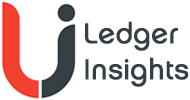Yesterday, experts gathered at the Frankfurt Crypto Assets Conference to discuss the state of tokenization in the European Union. The discussions revealed both frustration at the pace of progress and optimism about upcoming developments, particularly regarding the EU Capital Markets Union and wholesale central bank money initiatives.
The promise of tokenization
Tokenization offers several key benefits for financial institutions and markets. James Harris from Standard Chartered’s Zodia Custody highlighted intraday settlement and capital reusability as primary advantages. This reusability refers to faster settlement times enabling quicker asset turnover and capital that can be redeployed for additional trades.
Susanne Reinhold from UBS agreed with these points while emphasizing the significant efficiency gains from automation through smart contracts.
However, some participants noted that current implementations may not be reaching the technology’s full potential. Michael Spitz from Deutsche Börse’s 360X observed that traditional issuers are “just utilizing a new infrastructure to use the old product. So we haven’t seen product innovation as such.” He argued that shortened settlement times don’t represent true innovation since they don’t necessarily require distributed ledger technology (DLT).
This sentiment was echoed by Ms. Reinhold, who pointed out that institutions must identify their value proposition and understand whether their “current role will persist or transform in the future.”
Addressing challenges and roadblocks
Several speakers expressed frustration about the slow pace of institutional adoption, despite recent acceleration. Volker Braunberger from FUNDSONCHAIN referenced industry forecasts predicting more than a trillion dollars in tokenization by 2030, comparing the current situation to “a ketchup bottle. It’s still dripping. The big wave – we are all waiting on that.”
James Harris from Zodia Custody provided a comprehensive summary of current obstacles. One is the missing pieces of infrastructure such as settlement layers and clearinghouses. There’s significant market fragmentation with thousands of tokenization solutions and blockchain rails, creating overwhelming choices that also make integration costly. Regulatory uncertainty has been an issue, though it has improved significantly. Finally, many solutions focus on technology and fail to address what the market actually needs.
The regulatory landscape is evolving rapidly, creating both challenges and opportunities. During a panel on tokenized funds, participants discussed Luxembourg’s latest tokenization friendly legislation that could challenge Germany’s current advantages. For many years, Luxembourg has been Europe’s hub for international fund issuance. By creating a level regulatory field, it becomes a formidable competitor. German firms noted that many current sales leads in the funds sector (rather than bonds) originate from Luxembourg, with Michael Spitz from 360X predicting Luxembourg will dominate tokenization across multiple asset classes.
Another interesting observation was the existence of a two track approach among financial institutions. Some, like UBS, are fully embracing the opportunities, while others adopt a wait and see strategy. We’d observe that even among the leaders, approaches differ: some focus on ecosystem participation (UBS and Standard Chartered), while others employ hybrid strategies with more priority on their own platforms (JP Morgan‘s Kinexys).
During one of the talks, most panelists expressed a desire for greater regulatory harmonization and passporting for tokens, which would address many current challenges.
Future outlook and predictions
Despite current challenges, the conference revealed significant optimism about the future of tokenization in Europe. Christoph Hock from German asset manager Union Investment noted remarkable growth in industry participation, mentioning that a working group on fund tokenization had grown from just five people 18 months ago to over twenty participants today.
Hock shared several optimistic predictions for the coming year. He believes there will be movement on the European Capital Markets Union and the ECB will go live with wholesale central bank money. Plus, he thinks by then the ECB will accept tokenized securities for repo collateral.
Recent industry developments in the United States help to support this optimism. Fidelity has announced plans to issue a tokenized money market fund and stablecoin, the CME is launching a tokenization solution, and New York Stock Exchange parent ICE plans to use stablecoins for capital markets transactions.
The conference reflected the mix of frustration with slow progress combined with genuine optimism about upcoming developments and growing institutional interest. As regulatory frameworks mature and infrastructure builds out, the participants expect the “ketchup bottle” effect to finally deliver the long awaited wave of tokenization across European markets.






